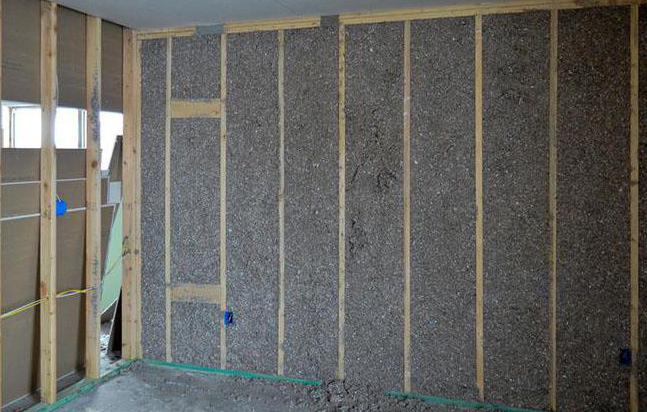The climate in most of our country is very severe. Therefore, almost any house built outside the city needs to be insulated. A variety of materials can be used to carry out such a procedure. When selecting an insulator, first of all, attention is paid to the degree of its thermal conductivity. The lower it is, the more effective the lining will be. To determine this indicator, there is a special table of thermal conductivity of building materials.
Foam Insulators
This group of materials in terms of heat conservation is considered the best. It primarily includes such insulators as polystyrene foam and polystyrene. The table of thermal conductivity of building materials SNiP demonstrates their effectiveness clearly.
Relate to the advantages of the insulators of this group and the fact that they are completely not afraid of moisture. The main disadvantage of all foamed materials is that they are completely unable to pass moisture vapor through them. In the houses finished by them, the so-called thermos effect appears. And therefore, the owners have to take additional measures to improve the indoor climate - install air conditioners and a ventilation system. Also a minus of these materials is the fact that they practically do not delay extraneous noise. In addition, foamed insulators love to gnaw mice and rats, making moves in them. And this, of course, contributes to the violation of the tightness of the insulation layer and reduce its effectiveness.
Mineral wool
This is the second most popular type of insulator. It retains heat indoors slightly worse than foamed materials. This group includes mainly basalt and glass wool. The main advantages of this type of insulation are low cost, as well as good vapor and sound insulation properties. The disadvantages of mineral wool include its ability to absorb moisture. Also a minus of these materials is that they emit unhealthy pairs of phenol-formaldehyde resins.
What to consider when choosing
When buying an insulator, you should first pay attention to such a parameter as its thickness. Also, for effective insulation, such an indicator as the thermal conductivity of building materials is very important. A table with the values inherent in different types of insulators will be presented below.
The required material thickness depends on several factors:
For homes in central Russia, according to the regulations, it is necessary to arrange an insulating layer of such a thickness that its ability to retain heat is the same as that of brickwork of 1.5 meters.
For wooden buildings, this figure may be lower. The fact is that the timber and the log themselves very well retain heat.
Thermal conductivity table of building materials
So, what are the properties of this or that insulator in this regard? How well modern building materials of this variety retain heat can be found in the table.
Insulator | Thermal Conductivity (W / m * C) | The required layer thickness for central Russia (cm) |
Mineral wool | 0.04 | thirteen |
Expanded polystyrene | 0.039 | 12 |
Solid silicate brick | 0.75 | 238 |
Hole brick | 0.5 | 157 |
Gas silicate | 0.15 | 47 |
Glued beam | 0.16 | fifty |
Expanded clay | 0.47 | 148 |
Slag concrete | 0.6 | 188 |
Foam concrete | 0.3 | 94 |
The thermal conductivity table of building materials, thus, shows that the most effective insulation at the moment is polystyrene foam. Vata, as already mentioned, can hold the cold a little worse.
Which material to choose
Thus, a very important indicator of the effectiveness of insulation of building envelopes is the thermal conductivity of building materials. The table, of course, is not the only way to find out its coefficient. The degree of thermal conductivity of the insulator is usually indicated on it by the manufacturer. At the same time, the following values can be affixed to the label:
Both foamed materials and cotton wool are usually produced in a thickness of 10 or 5 cm. As the comparative table of thermal conductivity of building materials shows, for the middle strip of Russia the insulating layer of stone buildings should not be less than 12-13 cm. However, in practice, 10 cm is usually enough. Therefore, warming of suburban buildings is carried out either in one layer of material of 10 cm, or in two insulators of 5 cm thick. The latter method is used more often. With this technology, the second layer is laid so that the seams of the first are completely blocked. As a result, maximum sealing of the insulating casing is achieved.

As you can see, there are many materials designed to isolate country houses. If desired, for insulation, you can choose both a foamed version and mineral wool. The effect, as shown by the thermal conductivity table of building materials, in both cases will be just wonderful. However, of course, only when the sheathing of the enclosing structures will have a sufficient thickness.